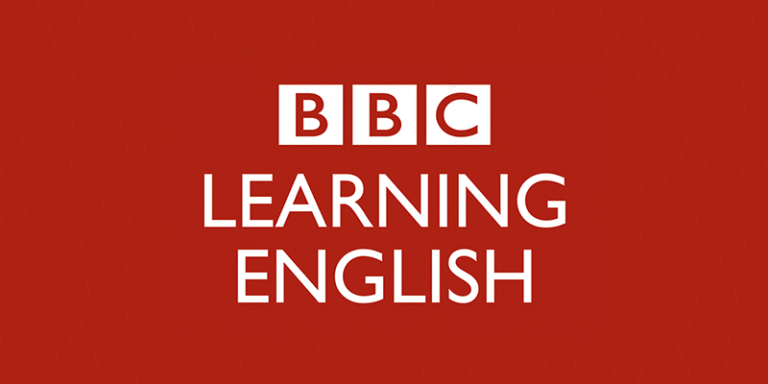پادکست BBC شماره 254- Is knuckle cracking good for you
پادکست BBC شماره 254
سلام با دویست و پنجاه و چهارمین سری از پادکستهای BBC 6 Minute English در خدمت شما هستیم.
در این قسمت درباره قلنج شکوندن انگشتان صحبت میشه. تا حالا شما این کار رو کردین؟ یا اصلا میتونین؟ در این پادکست درباره این صحبت میشه که این کار مفیده یا فقط یه عادت آزاردهنده است. همچنین نظر استاد دانشگاه آلبرتا درباره اینکه با قلنج شکوندن چه اتفاقی برای مفاصل میفته گفتگو میشه و کلمات و اصطلاحات مربوط به این موضوع بیان میشه.
در زیر کلمات کلیدی که باید با آنها آشنا شوید برایتان توضیح داده شدهاند:
make your flesh creep: you feel frightened or disgusted by something
make your flesh creep: احساس ترس یا تنفر نسبت به چیزی داشتن
arthritis: a disease that causes pain and swelling in joints of the body
arthritis: آرتروز/ بیماری مفاصل
an old wives’ tale: an old idea or belief that has no scientific support
an old wives’ tale: نظریه قدیمی که پشتوانه علمی نداره
rehabilitation: the process of helping somebody get better from an illness or injury
rehabilitation: توانبخشی
MRI (Magnetic Resonance Imaging): technology hospitals use to produce an image of the inside of a person’s body
MRI (Magnetic Resonance Imaging): ام آر آی / تکنولوژی که بیمارستان برای گرفتن عکس از داخل بدن بیمار استفاده میکنه
insight: understanding
insight: فهم / آگاهی
soluble: able to be dissolved
soluble: قابل حل
ceramic: made of clay
ceramic: سرامیک / از سفال ساخته شده
resilient: (here) able to return to its original shape after being stretched or bent
resilient: انعطاف پذیر/ ارتجاعی
synthetic: man-made
synthetic: مصنوعی
withstand: cannot be damaged by something
withstand: مقاوم
wear and tear: damage as a result of ordinary or everyday use
wear and tear: آسیب در نتیجه استفاده روزانه
Transcript of the podcast

پادکست BBC 6 minute English – Is knuckle cracking good for you
Rob
Hello and welcome to 6 Minute English. I’m Rob…
Neil
… and I’m Neil. Hello. (cracking knuckles)
Rob
Don’t do that please, Neil! It makes my flesh creep.
Neil
Oh dear, if something makes your flesh creep it means you feel frightened or disgusted by something. I don’t know why I do it. It just feels nice.
Rob
But you’ll end up with arthritis when you’re older, you know. Arthritis is a disease that causes pain and swelling in joints of the body.
Neil
That’s an old wives’ tale, Rob! And that means an old idea or belief that has no scientific support.
Rob
OK, if you say so, Professor. And since you’re in a scientific mood, how about answering today’s quiz question. Which type of joint can you crack? Is it …
a) fibrous?
b) cartilaginous?
Or c) synovial?
Neil
OK, this professor isn’t feeling too clever today. I’m going to have to take a guess and say, c) synovial.
Rob
OK. Well, we’ll find out how smart you really are later on in the programme. Now let’s listen to Greg Kawchuk, Professor of Rehabilitation Medicine at the University of Alberta. Rehabilitation means the process of helping somebody get better from an illness or injury.
INSERT
Greg Kawchuk, Professor of Rehabilitation Medicine at the University of Alberta
We’ve recently been able to use some new technology through MRI imaging to see for the first time what is actually happening inside the joint when someone pops or cracks their knuckles. And because of that we’re hopeful that we’ll be able to start to ask questions about why is it that some people can do this and other people can’t.
Neil
What does MRI stand for?
Rob
It means Magnetic Resonance Imaging. Hospitals use this technology to produce an image of the inside of a person’s body.
Neil
So some people can’t crack their knuckles. Can you, Rob?
Rob
I don’t know, and I’m not about to try. But it isn’t just finger knuckles that crack – you can do it with your neck, back, knees, ankles and toes.
Neil
Professor Greg Kawchuk says that comparing people who crack their knuckles and people who don’t might provide some insight – or understanding – into whose joints are healthier.
Rob
Sounds interesting. But what actually happens when you crack your knuckles, Neil?
Neil
Well, when you stretch or bend your finger to pop the knuckle, you’re making the bones of the joint pull apart… like this…(cracking knuckles)
Rob
Please don’t do it again!
Neil
Well, it stretches the space around the joint and surrounding fluid and causes a decrease in pressure. As a result, gas dissolved in the fluid becomes less soluble – or less able to be dissolved – leading to the formation of bubbles. Now when you stretch the joint far enough, these bubbles burst, producing the ‘pop’ sound.
Rob
Ouch! Excellent – well, thanks for the biology demonstration there, Neil …
Neil
Any time! Any time, Rob! Now let’s hear from the professor again about the medical value of research into knuckle cracking.
INSERT
Greg Kawchuk, Professor of rehabilitation medicine at the University of Alberta
When our engineering colleagues do this between two flat surfaces say of ceramic or porcelain… When they do this and they pull them apart quickly and there’s a little bit of fluid in between – they can use electron microscopy to see there’s been tremendous damage to the surfaces of the joints. But for some reason we don’t see that in the human joint. There’s something that makes it very resilient.
Rob
Interesting stuff! So scientists have performed experiments to imitate what happens in a human joint when you crack your knuckles. And when you quickly pull apart a pair of ceramic – or clay – tiles with fluid between them, it causes a lot of damage to the surface of the tiles.
Neil
So why don’t human joints get damaged as well?
Rob
Well, the scientists don’t actually know. They can see the damage to the tiles using electron microscopy – that’s a very powerful microscope. But it’s not clear what makes the human joint so resilient to damage – and resilient in this context means returning to its original shape after being stretched or bent.
Neil
Right. But with further research scientists may be able to find out – and then use this information to help people with joint problems.
Rob
Or they could create synthetic – or man-made – materials which can withstand wear and tear better than current ones. Withstand means not be damaged by something and wear and tear means damage as a result of ordinary use.
Neil
Can we have the answer to today’s quiz question now, Rob?
Rob
Yes, of course. So which type of joint can you crack? Is it … a) fibrous? b) cartilaginous? Or c) synovial?
Neil
And I said: c) synovial.
Rob
You are quite clever actually because you are right, or was it a good guess?
Neil
It was a good guess.
Rob
Well done! And synovial is the name for the fluid that surrounds this type of joint.
Neil
OK. So can we hear the words we learned today again?
Rob
Of course. We heard:
make your flesh creep
arthritis
an old wives’ tale
rehabilitation
MRI (Magnetic Resonance Imaging)
insight
soluble
ceramic
resilient
synthetic
withstand
wear and tear
Neil
Well, that’s the end of today’s 6 Minute English. We thought it was a cracking show! Please join us again soon.
Both
Bye.
Rob
Go on Neil, one more time.
Neil
Here we go. (cracking knuckles) Feels great!
Rob
Horrible!
برای شنیدن دیگر پادکست ها، به بخش پادکست در مرکز آموزش رایگان مراجعه نمایید.







